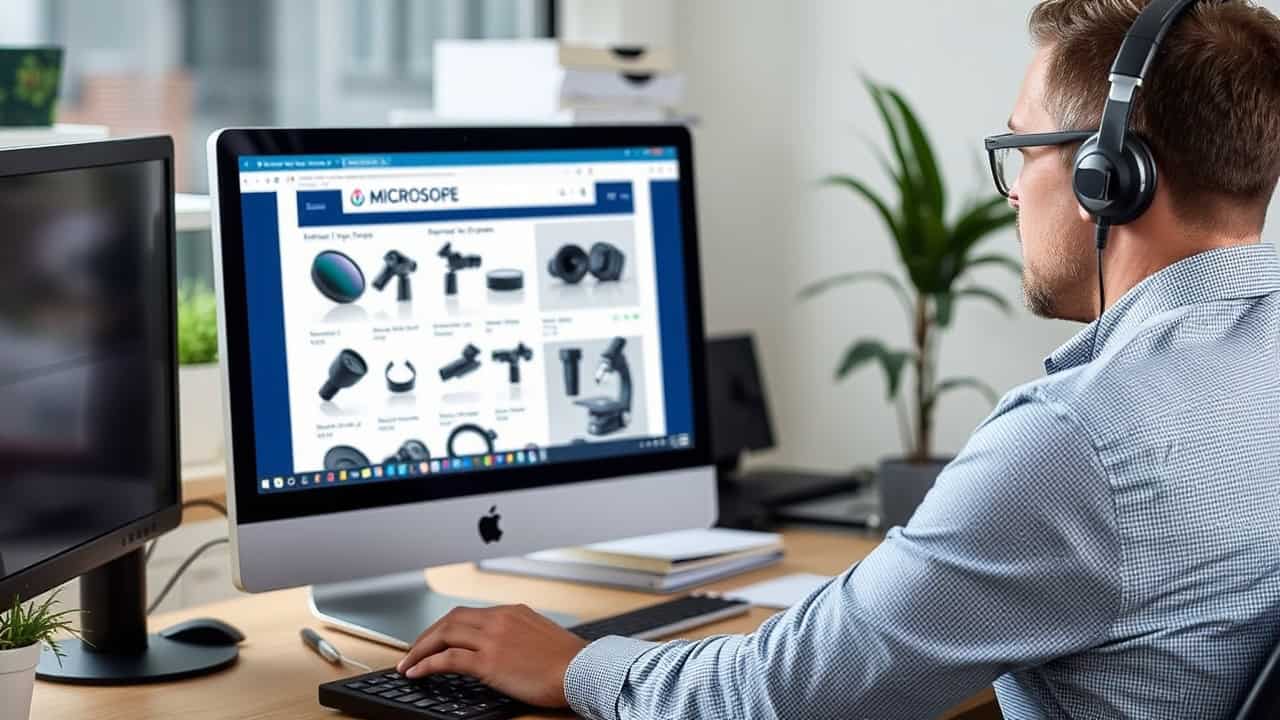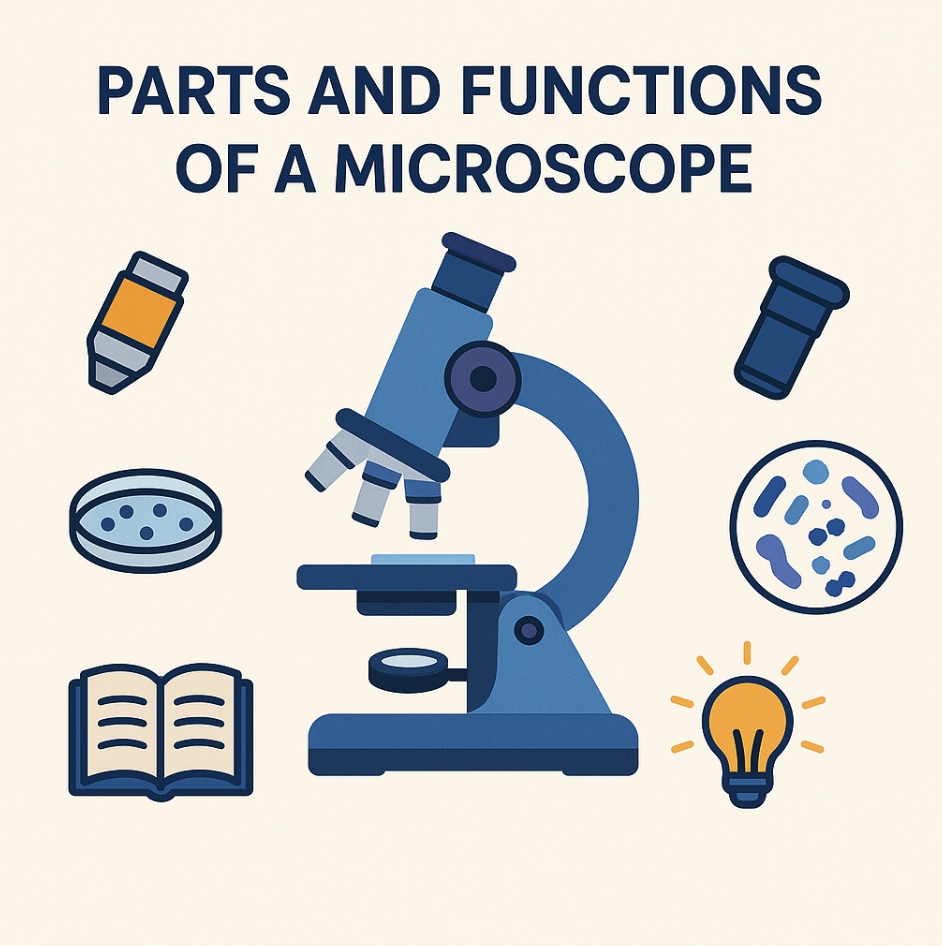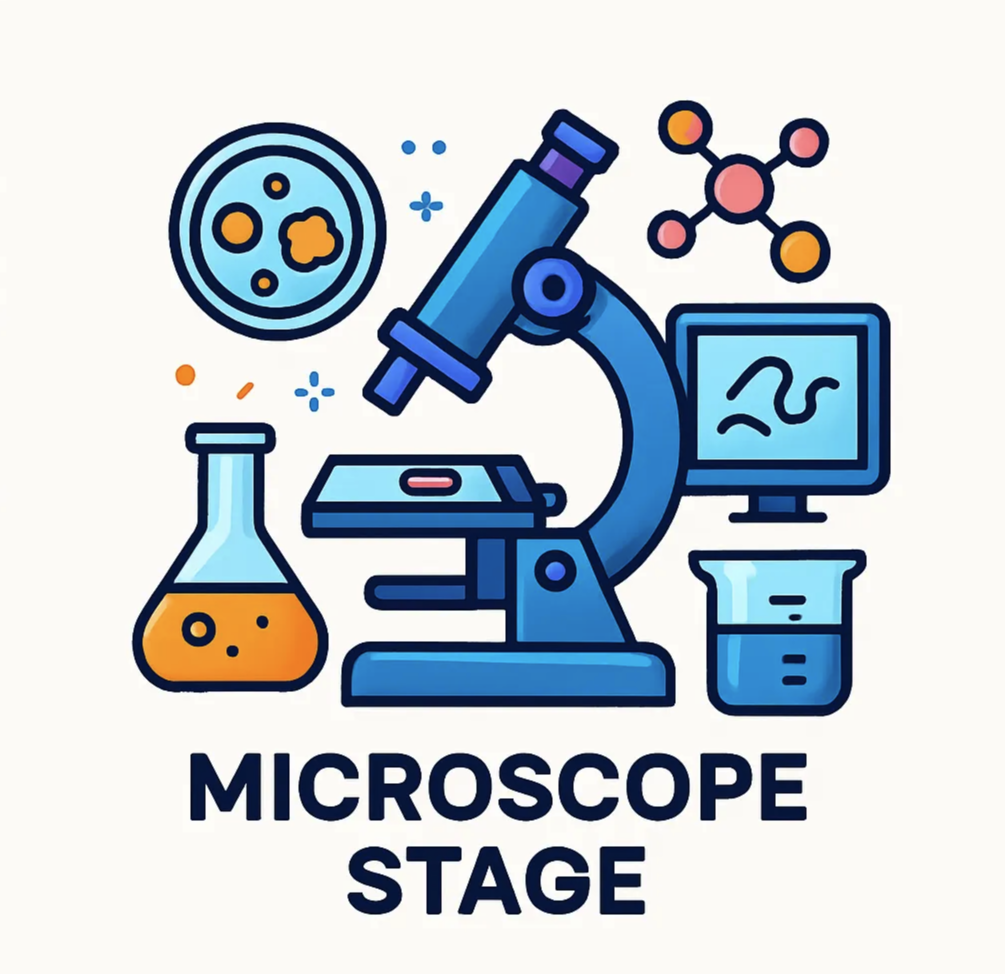
Have you ever considered the importance of microscope eyepieces in scientific research? Choosing the right eyepiece can significantly enhance your viewing experience, unveiling fine details of specimens that might otherwise go unnoticed. Eyepieces, in combination with microscope objectives, magnify images to provide a detailed glimpse into specimens. Picking the appropriate eyepiece guarantees sharpness and accuracy, essential for precise observations.
Consider several factors when choosing eyepieces. Magnification level, field of view, and eye relief play vital roles in determining the best fit for your needs. Each aspect contributes to the overall effectiveness and comfort during use.
Making an informed decision enhances your ability to conduct successful experiments and research.
- Understanding Microscope Eyepieces
- Tip 1: Determine Your Magnification Needs
- Tip 2: Consider the Field of View
- Tip 3: Evaluate Eye Relief
- Tip 4: Assess the Quality of Optics
- Tip 5: Check Compatibility with Your Microscope
- Tip 6: Decide on the Type of Eyepiece
- Tip 7: Consider the Cost and Budget
- Tip 8: Seek Expert Advice and Reviews
Understanding Microscope Eyepieces
Have you ever peered through a microscope and wondered about the magic behind the lenses? The right eyepiece can transform your experience, revealing details you never imagined. Let’s get into the types of microscope eyepieces and discover what makes them essential.
Types of Microscope Eyepieces
Microscope eyepieces come in various types, each offering unique features and benefits to enhance your viewing experience and research outcomes. In this section, we will explore two primary categories of microscope eyepieces: fixed and adjustable.
We will also explore the differences between widefield, regular, and super widefield eyepieces and how these variations impact the quality of your observations.
Fixed vs. Adjustable Eyepieces
Fixed eyepieces have a fixed magnification and cannot be adjusted. They are commonly found in low to mid-range microscopes and are ideal for routine observations and basic microscopy tasks.
While they offer simplicity and ease of use, fixed eyepieces do not provide versatility in terms of magnification options.
On the other hand, adjustable eyepieces allow you to change the magnification by adjusting the eyepiece’s position or by switching between different lens configurations.
These eyepieces offer greater flexibility and precision, making them suitable for a wide range of applications, including scientific research, medical diagnostics, and advanced microscopy techniques.
Widefield vs. Regular vs. Super Widefield Eyepieces
The terms widefield, regular, and super widefield refer to the field of view provided by the eyepieces.
Widefield eyepieces offer a larger field of view compared to regular eyepieces. This wider field allows you to observe a larger area of the specimen, resulting in enhanced spatial awareness and a more immersive viewing experience.
Widefield eyepieces are particularly beneficial when working with samples that require a broad perspective or when conducting biological and clinical research.
Regular eyepieces provide a standard field of view and are commonly used in routine microscopy tasks. They offer good image clarity and can be found in a wide range of magnifications, making them suitable for general observations and educational purposes.
Super widefield eyepieces offer an even larger field of view than widefield eyepieces. This increased viewing area allows for more detailed observations and is especially useful when working with complex samples that require high precision and meticulous examination.
| Eyepiece Type | Features | Applications |
|---|---|---|
| Fixed | Simple to use Cost-effective Ideal for routine observations |
Education Basic microscopy tasks |
| Adjustable | Flexible magnification options Precision and versatility |
Scientific research Medical diagnostics Advanced microscopy techniques |
| Widefield | Larger field of view Enhanced spatial awareness |
Biological research Clinical research Specimens requiring a broad perspective |
| Regular | Standard field of view Good image clarity |
Routine microscopy tasks General observations Education |
| Super Widefield | Large field of view High precision observations |
Complex samples Requires detailed examination |
Key Features of Eyepieces
Magnification
Magnification determines how much larger an object appears. Eyepieces come in various magnifications, such as 10X or 15X. Matching eyepiece magnification with objective lenses ensures optimal viewing.
High magnification reveals intricate details, while low magnification offers broader views.
|
Magnification |
Application |
Example Use |
|---|---|---|
|
10X |
General observation |
Biological studies |
|
15X |
Detailed analysis |
Cellular research |
|
20X |
High precision |
Material science |
Field of View
Field of view refers to the observable area through the eyepiece. A wider field of view allows more of the specimen to be seen at once. This feature is crucial for scanning large samples. Narrow fields limit visibility, which can hinder comprehensive analysis.
Eye Relief
Eye relief measures the distance from the eyepiece to your eye. Longer eye relief provides comfort, especially for eyeglass wearers. Short eye relief may cause discomfort during prolonged use. Choosing the right eye relief enhances usability and reduces fatigue.
Understanding these features helps you select the best microscope eyepieces for your needs. Whether you’re exploring the microscopic world or gazing at the stars with telescope eyepieces, the right choice makes all the difference.
Tip 1: Determine Your Magnification Needs
Have you ever felt overwhelmed by the variety of microscope eyepieces available? Choosing the right magnification can transform your scientific exploration. Understanding magnification needs is crucial for accurate observations and detailed analysis.
Matching Eyepiece Magnification with Objective Lenses
Selecting the right eyepiece magnification involves aligning it with your objective lenses. The combination determines the total magnification, revealing intricate details or broader views.
Most eyepieces range from 10x to 20x, avoiding the pitfalls of empty magnification. This range ensures clarity without sacrificing detail.
Calculating Total Magnification
Calculating total magnification involves multiplying the eyepiece magnification by the objective lens magnification. This simple formula helps you achieve the desired level of detail. For example, a 10x eyepiece paired with a 40x objective lens provides a total magnification of 400x. This combination allows for detailed cellular analysis.
|
Eyepiece |
Objective Lens |
Total Magnification |
|---|---|---|
|
10x |
4x |
40x |
|
10x |
10x |
100x |
|
15x |
40x |
600x |
|
20x |
100x |
2000x |
Common Magnification Combinations
Common magnification combinations cater to various scientific needs. A 10x eyepiece with a 10x objective lens suits general observations. For more detailed work, a 15x eyepiece with a 40x objective lens offers enhanced precision. These combinations provide flexibility for different applications.
Understanding these concepts empowers you to make informed decisions. The right magnification enhances your ability to explore the microscopic world effectively. Choose wisely to unlock the full potential of your microscope.
Tip 2: Consider the Field of View
Have you ever felt like you’re missing out on the bigger picture when using a microscope? The field of view (FOV) plays a vital role in what you see. A wider FOV can transform your microscopy experience, revealing more of the specimen at once. Such a aspect is critical when scanning large samples or observing dynamic processes.
Importance of Field of View in Microscopy
The field of view determines the observable area through the eyepiece. A larger FOV allows you to see more of the specimen without moving the slide. This feature enhances efficiency and accuracy in research. A wide FOV is essential for applications that require comprehensive analysis.
For instance, automated cell counting relies heavily on FOV. A limited view can hinder the process, affecting the results.
Scientific Research Findings:
-
Automated Microscope-Based Cell Counting Efficiency: Automated cell counting faces limitations due to narrow FOV, especially for high-resolution tasks.
-
Research on Microscope Field of View Importance: Matching microscope FOV to scientific camera FOV optimizes imaging performance.
|
Application |
Required FOV |
|---|---|
|
Automated Cell Counting |
Wide |
|
Tissue Analysis |
Wide |
|
Cellular Research |
Moderate to Wide |
|
Material Inspection |
Narrow to Moderate |
Applications Requiring Wide Field of View
Specific applications demand a wide FOV for optimal performance. Automated cell counting benefits from a broad view, capturing more cells in a single frame.
Tissue analysis also requires a wide FOV to observe large sections simultaneously. This feature reduces the need for frequent adjustments, saving time and effort.
A wide FOV proves advantageous in educational settings. Students can observe entire specimens without constant repositioning. This approach enhances learning by providing a comprehensive view. Researchers studying dynamic processes, such as cell movement, find a wide FOV indispensable.
Observing the entire process without interruption leads to more accurate conclusions.
Limitations of Narrow Field of View
A narrow FOV presents challenges in microscopy. Limited visibility can result in missed details, affecting the quality of observations. Researchers may struggle to capture the full context of a specimen. Frequent adjustments become necessary, leading to increased time and effort.
Narrow FOV restricts the ability to scan large samples efficiently. This limitation proves problematic in applications like tissue analysis or automated counting.
The sparse nature of diagnostically relevant features compounds this issue. A narrow view hinders the identification of critical elements, impacting the overall analysis. Understanding the importance of FOV empowers you to make informed decisions. A wide FOV enhances your ability to explore the microscopic world effectively. Choose wisely to unlock the full potential of your microscope.
Tip 3: Evaluate Eye Relief
Have you ever experienced discomfort while peering through a microscope? Eye relief plays a crucial role in ensuring a comfortable viewing experience. Understanding this feature can transform your microscopy sessions.
Comfort and Usability
Eye relief refers to the distance between your eye and the eyepiece lens. Proper eye relief ensures a clear image without straining your eyes. Selecting the right eye relief enhances comfort during extended observations.
Consider the following factors when evaluating eye relief:
-
Long Eye Relief: Ideal for eyeglass wearers. Provides a comfortable distance, allowing you to see the entire field of view. Typically ranges from 15-20mm.
-
Short Eye Relief: Suitable for those without corrective lenses. Offers a closer view, but may cause discomfort over long periods.
Eye Relief Comparison Table:
|
Type of Eye Relief |
Distance (mm) |
Ideal For |
|---|---|---|
|
Long |
15-20 |
Eyeglass wearers |
|
Medium |
10-14 |
General use |
|
Short |
<10 |
Non-eyeglass users |
Long Eye Relief for Eyeglass Wearers
Eyeglass wearers often face challenges with standard eyepieces. Long eye relief provides a solution by offering ample space for glasses. This feature enhances usability and reduces strain. Long eye relief ensures that eyeglass wearers can enjoy a full and clear view. This feature prevents the need for constant adjustments, allowing for a seamless experience.
Depending on your needs, selecting eyepieces that differ in their eye relief can make a significant difference.
Short Eye Relief Considerations
Short eye relief may suit those without glasses. This option allows for a closer look at specimens. However, it may lead to discomfort during prolonged use.
Consider the following when opting for short eye relief:
-
Comfort: Frequent breaks may be necessary to prevent eye fatigue.
-
Usability: Ensure that the eyepiece aligns with your viewing habits.
Short eye relief offers a unique perspective but requires careful consideration. Balancing comfort and clarity is essential for an optimal experience.
Tip 4: Assess the Quality of Optics
Have you ever wondered why some microscope images appear clearer than others? The secret often lies in the quality of optics. High-quality optics can transform your viewing experience, revealing details that might otherwise go unnoticed.
Assessing the quality of optics ensures that you get the most out of your microscope.
Lens Coatings and Materials
The materials and coatings used in lenses play a crucial role in image clarity. High-quality lenses provide sharper images, enhancing your ability to observe fine details. Understanding these components helps you make informed decisions when selecting eyepieces.
Anti-Reflective Coatings
Anti-reflective coatings reduce glare and reflections on lens surfaces. These coatings improve light transmission, resulting in brighter and clearer images. A good anti-reflective coating enhances contrast, making it easier to distinguish between different specimen features.
Consider the following benefits of anti-reflective coatings:
-
Improved Clarity: Reduces glare for sharper images.
-
Enhanced Contrast: Makes details more distinguishable.
-
Better Light Transmission: Increases brightness for clearer views.
|
Coating Type |
Benefit |
|---|---|
|
Single-Layer Coating |
Basic glare reduction |
|
Multi-Layer Coating |
Superior light transmission |
|
Broadband Coating |
Enhanced color accuracy |
Selecting eyepieces with anti-reflective coatings can significantly enhance your microscopy experience.
These coatings ensure that you see the clearest possible image, allowing for more accurate observations.
High-Quality Glass Materials
The type of glass used in lenses affects image quality. High-quality glass provides better clarity and reduces distortions. Selecting eyepieces made from superior glass materials ensures that you get the best possible view of your specimens.
Consider the following types of glass materials:
-
Crown Glass: Offers good clarity and is cost-effective.
-
Flint Glass: Provides higher refractive index for better focus.
-
ED Glass: Reduces chromatic aberration for sharper images.
|
Glass Type |
Benefit |
|---|---|
|
Crown Glass |
Good clarity, affordable |
|
Flint Glass |
Higher refractive index |
|
ED Glass |
Reduced chromatic aberration |
Choosing eyepieces made from high-quality glass materials enhances your ability to observe fine details. Superior glass ensures that you see the clearest possible image, making your microscopy sessions more productive and enjoyable.
Assessing the quality of optics involves understanding the importance of lens coatings and materials. High-quality optics provide clearer images, enhancing your ability to explore the microscopic world effectively.
Choose wisely to unlock the full potential of your microscope.
Tip 5: Check Compatibility with Your Microscope
Have you ever purchased a microscope eyepiece only to find it doesn’t fit your microscope? Ensuring compatibility between your eyepiece and microscope is crucial for a seamless experience. The right fit enhances your ability to explore the microscopic world without interruptions.
Understanding the importance of eyepiece tube diameter helps you make informed decisions when selecting eyepieces.
Eyepiece Tube Diameter
The diameter of the eyepiece tube plays a significant role in compatibility. Most microscopes have standard sizes, but some might require custom solutions. Knowing the diameter ensures that your eyepiece fits perfectly, providing optimal performance.
Standard Sizes
Standard eyepiece sizes include 0.965 inch, 1.25 inch, and 2 inch. These sizes cater to most microscopes, offering a range of options for different needs.
The 1.25-inch diameter is the most common, providing a balance between size and field of view.
This size suits various applications, from educational settings to professional laboratories.
|
Diameter (inch) |
Common Use |
Benefits |
|---|---|---|
|
0.965 |
Basic microscopes |
Cost-effective |
|
1.25 |
General applications |
Widely compatible |
|
2 |
Advanced observations |
Wider field of view |
Understanding these standard sizes helps you choose the right eyepiece for your microscope. The correct diameter ensures that your eyepiece fits securely, enhancing your viewing experience.
Custom Sizes
Some microscopes may require custom eyepiece sizes. These sizes cater to specific models or unique applications. Custom sizes often involve adapters to ensure compatibility.
Understanding the barrel diameter of your microscope helps you determine if custom solutions are necessary.
|
Custom Diameter (inch) |
Application |
Considerations |
|---|---|---|
|
1.5 |
Specialized research |
Requires adapter |
|
3 |
High-end microscopes |
Enhanced performance |
Custom sizes offer flexibility for unique needs. Adapters bridge the gap between non-standard eyepieces and microscopes. Understanding your microscope’s requirements ensures that you select the right eyepiece for optimal performance. Choosing the correct eyepiece tube diameter is essential for compatibility.
Standard sizes cater to most needs, while custom solutions provide flexibility for unique applications. Understanding these aspects empowers you to make informed decisions, ensuring a seamless microscopy experience.
Tip 6: Decide on the Type of Eyepiece
Have you ever wondered why some microscopes have one eyepiece while others have two or even three? The choice between monocular, binocular, and trinocular eyepieces can significantly impact your viewing experience.
Each type offers unique advantages that cater to different needs and preferences.
Monocular vs. Binocular vs. Trinocular
Advantages of Each Type
Monocular eyepieces provide a compact and lightweight option. This design makes monocular microscopes easy to transport and ideal for fieldwork. Monocular eyepieces often suit beginners or those who require a simple setup. The single eyepiece allows for quick adjustments and straightforward use.
Binocular eyepieces offer a more immersive experience. Using both eyes reduces strain and enhances depth perception. This feature proves beneficial for extended observation sessions.
Binocular microscopes excel in educational settings, where comfort and ease of use matter. The dual eyepiece design also aids in detailed analysis by providing a more natural view.
Trinocular eyepieces add an extra dimension with a third port. This port allows for camera attachment, enabling image capture and documentation.
Trinocular microscopes suit professional environments, where recording observations is crucial. The additional functionality supports advanced research and presentations.
|
Eyepiece Type |
Key Advantage |
Ideal Use Case |
|---|---|---|
|
Monocular |
Portability |
Fieldwork, Beginners |
|
Binocular |
Comfort and Depth |
Education, Long Sessions |
|
Trinocular |
Image Capture Capability |
Research, Documentation |
Specific Use Cases
Monocular eyepieces find their niche in situations requiring mobility. Field researchers benefit from the lightweight design, allowing for easy transport. Monocular microscopes also serve as excellent educational tools for young students. The simplicity of use encourages exploration without overwhelming complexity.
Binocular eyepieces cater to users who prioritize comfort. Long observation periods become more manageable with reduced eye strain. Binocular microscopes enhance learning experiences in classrooms and laboratories.
The ability to view specimens with both eyes provides a more comprehensive understanding. Trinocular eyepieces meet the needs of professionals who require documentation. Researchers can attach cameras to capture images for analysis and sharing. Trinocular microscopes support presentations and publications by providing high-quality visuals. This capability proves invaluable in scientific research and academic settings.
Choosing the right type of eyepiece involves considering your specific needs and preferences. Whether you seek portability, comfort, or advanced functionality, the right eyepiece can transform your microscopy experience.
Make an informed decision to enhance your exploration of the microscopic world.
Tip 7: Consider the Cost and Budget
Have you ever felt overwhelmed by the price tags on microscope eyepieces? The cost can vary widely, leaving you wondering if a higher price guarantees better quality. Understanding how to balance quality and affordability can transform your purchasing decisions.
Balancing Quality and Affordability
Quality and affordability often seem at odds when selecting microscope eyepieces. High-quality eyepieces offer superior clarity and durability. However, they often come with a hefty price tag.
On the other hand, budget-friendly options provide basic functionality at a lower cost. Finding the right balance between these factors ensures you get the best value for your money.
Survey Results:
-
Budget Eyepieces – Trash or Treasure?: Many users find affordable eyepieces meet their needs for basic observations.
-
High-End Eyepieces: Often preferred by professionals for detailed analysis and research.
|
Type of Eyepiece |
Price Range |
Suitable For |
|---|---|---|
|
Budget-Friendly |
$20-$50 |
Students, Hobbyists |
|
Mid-Range |
$50-$150 |
Educators, Amateurs |
|
Premium |
$150-$500 |
Professionals, Researchers |
Understanding your specific needs helps determine the appropriate price range. Budget-friendly options may suffice for casual use, while professionals might require premium eyepieces for advanced work.
Budget-Friendly Options
Budget-friendly eyepieces offer an attractive solution for those on a tight budget. These eyepieces provide essential features without breaking the bank.
Many users find that affordable options meet their needs for basic observations and educational purposes.
Consider the following benefits of budget-friendly eyepieces:
-
Affordability: Lower cost makes them accessible to students and hobbyists.
-
Basic Functionality: Suitable for general observations and educational settings.
-
Wide Availability: Easily found in most retail stores and online platforms.
Budget-friendly eyepieces prove valuable for those seeking cost-effective solutions. These options allow you to explore the microscopic world without a significant financial investment.
Premium Eyepieces
Premium eyepieces cater to those who demand the highest quality. These eyepieces offer superior optics, enhancing clarity and precision.
Professionals and researchers often prefer premium options for their advanced features and durability.
Consider the following advantages of premium eyepieces:
-
Superior Optics: High-quality lenses provide clearer and more detailed images.
-
Durability: Built to withstand frequent use and harsh conditions.
-
Advanced Features: Include additional functionalities like adjustable diopters and reticle support.
Premium eyepieces represent a worthwhile investment for those requiring top-tier performance. These options ensure you achieve the highest level of detail and accuracy in your observations.
Balancing quality and affordability involves understanding your specific needs and budget constraints.
Whether you choose budget-friendly or premium eyepieces, making an informed decision enhances your microscopy experience. Choose wisely to unlock the full potential of your microscope.
Tip 8: Seek Expert Advice and Reviews
Have you ever felt overwhelmed by the myriad of microscope eyepiece options? The choices can seem endless, and making the right decision feels daunting. Seeking expert advice and reading reviews can guide you to the best choice for your needs.
Experts offer insights that cut through the confusion, while reviews provide real-world experiences.
Consulting with Professionals
Professional advice can be invaluable when selecting microscope eyepieces. Experts possess knowledge that can save you time and money. Their recommendations often stem from years of experience and testing.
Engaging with professionals ensures you receive tailored advice that matches your specific requirements.
Benefits of Consulting Experts:
-
Tailored Recommendations: Experts consider your unique needs.
-
Time-Saving: Avoids trial and error.
-
Cost-Effective: Prevents unnecessary purchases.
|
Expert Type |
Key Benefit |
|---|---|
|
Optical Engineers |
Technical precision |
|
Experienced Users |
Practical insights |
|
Retail Specialists |
Product availability |
Consulting professionals provide a clearer path to the right eyepiece. Their expertise helps you navigate the complexities of optical technology.
This guidance leads to more informed decisions and better outcomes in your microscopy endeavors.
Importance of Expert Recommendations
Expert recommendations carry significant weight in the decision-making process. These endorsements often highlight products that excel in quality and performance.
Trustworthy advice can steer you toward eyepieces that offer the best value and functionality.
Expert recommendations often focus on key features such as clarity, durability, and ease of use.
These insights help you prioritize what matters most in an eyepiece. Following expert advice ensures you invest in a product that meets your expectations and enhances your microscopy experience.
Reading User Reviews
User reviews provide a wealth of information from those who have firsthand experience with the product. These reviews offer practical insights into the performance and reliability of different eyepieces.
Reading user feedback helps you understand the strengths and weaknesses of various options.
Common Themes in User Reviews:
-
Durability: Users often comment on the build quality.
-
Clarity: Many reviews highlight image sharpness.
-
Comfort: Eyepiece usability frequently mentioned.
|
Review Aspect |
User Feedback |
|---|---|
|
Durability |
“Survived multiple drops” |
|
Clarity |
“Razor-sharp images” |
|
Comfort |
“No eye strain after hours” |
User reviews offer a candid look at how eyepieces perform in real-world scenarios.
These insights help you gauge whether a product aligns with your needs and expectations. By combining expert advice with user reviews, you gain a comprehensive understanding of your options, leading to a more confident purchase decision.


